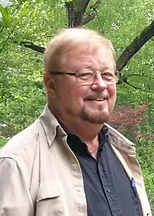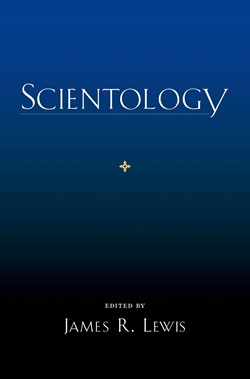Brainwashing is the concept that the human mind can be altered or controlled by certain psychological techniques. Brainwashing is said to reduce its subject's ability to think critically or independently, to allow the introduction of new, unwanted thoughts and ideas into their minds, as well as to change their attitudes, values, and beliefs.

Steven Alan Hassan is an American writer and mental health counselor who specializes in the area of cults and new religious movements. He worked as a deprogrammer in the late 1970s, but since then has advocated a non-coercive form of exit counseling.
A cult is a group which is typically led by a charismatic and self-appointed leader, who tightly controls its members, requiring unwavering devotion to a set of beliefs and practices which are considered deviant. It is in most contexts a pejorative term, also used for a new religious movement or other social group which is defined by its unusual religious, spiritual, or philosophical beliefs and rituals, or its common interest in a particular person, object, or goal. This sense of the term is weakly defined – having divergent definitions both in popular culture and academia – and has also been an ongoing source of contention among scholars across several fields of study.
David G. Bromley is a professor of sociology at Virginia Commonwealth University, Richmond, VA and the University of Virginia, Charlottesville, VA, specialized in sociology of religion and the academic study of new religious movements. He has written extensively about cults, new religious movements, apostasy, and the anti-cult movement.
The anti-cult movement consists of various governmental and non-governmental organizations and individuals that seek to raise awareness of cults, uncover coercive practices used to attract and retain members, and help those who have become involved with harmful cult practices.

Stephen A. Kent is a professor in the Department of Sociology at the University of Alberta in Edmonton, Alberta, Canada. He researches new religious movements (NRMs), and has published research on several such groups including the Children of God, the Church of Scientology, and other NRMs operating in Canada.
Michael D. Langone is an American counseling psychologist who specializes in research about cultic groups and psychological manipulation. He is executive director of the International Cultic Studies Association, and founding editor of the journal Cultic Studies Journal, later the Cultic Studies Review.
Benjamin David Zablocki was an American professor of sociology at Rutgers University where he taught sociology of religion and social psychology. He published widely on the subject of charismatic religious movements, cults, and brainwashing.
The academic study of new religious movements is known as new religions studies (NRS). The study draws from the disciplines of anthropology, psychiatry, history, psychology, sociology, religious studies, and theology. Eileen Barker noted that there are five sources of information on new religious movements (NRMs): the information provided by such groups themselves, that provided by ex-members as well as the friends and relatives of members, organizations that collect information on NRMs, the mainstream media, and academics studying such phenomena.

Bounded Choice: True Believers and Charismatic Cults is a 2004 psychology and sociology book on cults by Janja Lalich. It was published by University of California Press.
Janja Lalich is an American sociologist and writer. Lalich is best known as a foremost expert on cults and coercion, charismatic authority, power relations, ideology and social control. She is a professor emerita of sociology at the California State University, Chico.
Susan Jean Palmer is a Canadian sociologist of religion and author whose primary research interest is new religious movements. Formerly a professor of religious studies at Dawson College in Westmount, Quebec, she is currently an Affiliate Professor at Concordia University, and is also the Principal Investigator on the four-year SSHRC-funded research project, "Children in Sectarian Religions" at McGill University in Montreal, where she teaches courses on new religious movements.

The Politics of Religious Apostasy: The Role of Apostates in the Transformation of Religious Movements is a 1998 book edited by David G. Bromley. It presents studies by several sociologists of new religious movements on the role played by apostates The volume examines the apostate's testimonies, their motivations, the narratives they construct to discredit their former movements, and their impact on the public controversy between such movements and society.

James R. Lewis was an American philosophy professor at Wuhan University. Lewis was an academic, scholar of religious studies, sociologist of religion, and writer, specializing in the academic study of new religious movements, astrology, and New Age.
Thomas Robbins was an author and an independent scholar of sociology of religion.

Scientology is an edited volume about the Church of Scientology and the beliefs and movement called Scientology. It was edited by James R. Lewis, and published in March 2009 by Oxford University Press. In addition to Lewis, other contributors to the book include J. Gordon Melton, William Sims Bainbridge, Douglas E. Cowan, David G. Bromley, Anson Shupe, James T. Richardson, and Susan J. Palmer. Scientology gives an overview and introduction to the organization, and presents an analysis of the movement from the perspective of sociology. The book compares the organization to religious movements, and goes over its history of controversy. It delves into the practices of the organization and the activities undertaken at its facilities.
Dick Anthony was a forensic psychologist noted for his writings on the validity of brainwashing as a determiner of behavior, a prolific researcher of the social and psychological aspects of involvement in new religious movements.

Sex, Slander, and Salvation: Investigating The Family/Children of God is a 1994 book edited by J. Gordon Melton and James R. Lewis, on the Family International. Sex, Slander, and Salvation consists of 17 chapters made up of essays and research papers revolving around the Family International religious movement. The introduction was written by Lewis.

Armageddon in Waco: Critical Perspectives on the Branch Davidian Conflict is a 1995 non-fiction anthology book on the Waco siege edited by Stuart A. Wright. It was published by the University of Chicago Press.
The New Vigilantes: Deprogrammers, Anti-Cultists, and the New Religions is a 1980 nonfiction book on anti-cultism, deprogramming, and new religious movements (cults) by sociologists of religion Anson D. Shupe and David G. Bromley. A foreword was written by Joseph R. Gusfield. It was published by SAGE Publications in its Library of Social Research series as volume 113. Some have described the volume as a companion to their previous work, "Moonies" in America: Cult, Church, and Crusade (1979). Shupe and Bromley approach the anti-cult movement in the United States through a resource-mobilization lens.








